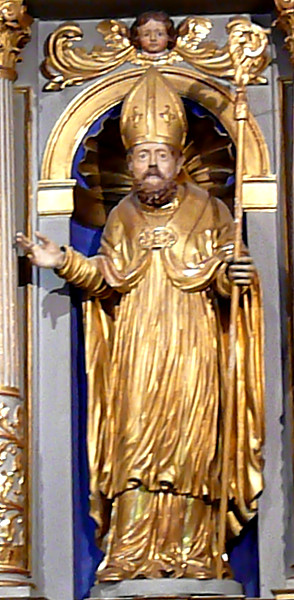The only known medieval narrative about the saint is in the Estaing breviary, Breviary: A book used by priests and monks with prayers and readings for each day. For the feast days of selected saints, the readings include a brief account of the saint's life or final days which says he was bishop of Auvergne, the province north of Rouergue. The local abbot was returning with the bishop from a synod in Rome and invited him to stay in the village for while. During this sojourn a blind man was cured by washing his eyes in water that Fleuret had used, and a lame man was enabled to walk when the saint gave him a piece of bread. The people were amazed and encouraged the bishop to extend his stay. He did, but after two weeks he took sick and died.1
The breviary says nothing of conversion of the populace at Estaing. The current parish tradition may have been influenced by the legend of St. Florus, whom St. Peter supposedly sent to evangelize in Auvergne. Only a few other documents in Rouergue and Auvergne refer to this saint, and none but the breviary gives any narrative details.2
Prepared in 2014 by Richard Stracke, Emeritus Professor of English, Augusta University. Revised 2015-05-15.

A statue of St. Fleuret in his episcopal vestments in his church in Estaing. (Photographed at the church by Richard Stracke, shared under Attribution-NonCommercial-ShareAlike license.)
NAMES
- In Latin, he is Floregius.
BIOGRAPHY
- Acta Sanctorum, July vol. 1, 42-46
NOTES
1 Acta Sanctorum, July vol. 1, 45-46.
2 Ibid., 42-45.